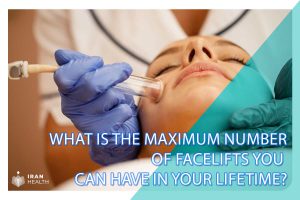Let’s start with a fundamental question: what is breast cancer, and how does it develop?
In breast cancer, cancerous cells start to multiply. There are different types of breast cancer based on how the cancer cells behave. Some of the common types include ductal carcinoma in situ (DCIS), invasive ductal carcinoma (IDC), invasive lobular carcinoma (ILC), and inflammatory breast cancer (IBC).
These cancers can differ by the presence or absence of specific receptors on the cancer cells, such as hormone receptors and human epidermal growth factor receptor 2 (HER2). The growth and response of cancer cells may be affected by these receptors.
Women worldwide have breast cancer, which is one of the most common and deadliest types of cancer. Genetic factors, lifestyle factors, and the environment can affect breast cancer risk.
In addition to lumps or thickening in the breast, changes in the breast size or shape, discharge from the nipple or inversion, redness or dimpling of the skin, and pain or swelling in the breast or armpit, there are several symptoms associated with breast cancer.
The main goal of this report is to summarize the current methods and tests used to diagnose breast cancer and the available treatment options for different types of breast cancer.
The report aims to compare and contrast the benefits and drawbacks of each diagnosis and treatment method and assess their effectiveness and suitability for various breast cancer cases. Additionally, the report intends to offer recommendations and suggestions for future research and practices in breast cancer diagnosis and treatment.
Diagnosis of Breast Cancer
Detecting breast cancer involves several methods to check for abnormal cells in the breast tissue. The main techniques are as follows:
Physical Exam:
The doctor carefully feels the breast and underarm area for lumps or changes. Non-invasive and straightforward, but may miss small or deep tumors.
Mammogram:
An X-ray of the breast can uncover tumors too tiny to feel. However, dense breast tissue can hide or mimic tumors. Radiation exposure is a small risk.
Ultrasound
Sound waves in mammography help to identify cysts versus solid masses, but they are less helpful in detecting calcium deposits associated with cancer.
MRI Scan:
Breast imaging with radio waves and magnets can detect multifocal tumors in both breasts and check lymph nodes, but it is expensive and can lead to false cancer diagnoses.
Biopsy:
They were removing breast tissue samples to examine under a microscope for cancer cells. Provides a definite cancer diagnosis and details to guide treatment. Risks include infection and missed cancer cells if the sample is not representative.
Accuracy depends on the tumor’s stage, size, and location in the breast tissue. A small, early-stage tumor in the milk duct may only show up on a mammogram. An inflammatory breast cancer overgrowing near the skin may be visible on an exam or scan.
A skilled, experienced doctor can minimize discomfort from exams and biopsies while accurately interpreting results. High-quality equipment produces clear images and samples, reducing radiation exposure and infection risk.
An expert team and the latest technology can help provide an accurate, timely diagnosis of breast cancer through a combination of physical exams, imaging tests, and biopsies.
Treatment Options for Breast Cancer
Breast cancer treatment depends on the type and stage of cancer, along with the patient’s health and preferences. The main options are
Surgery:
A lumpectomy, mastectomy, and sentinel node biopsy are just a few of the treatments that aim to eliminate cancer and prevent its spread. Benefits include confirming diagnosis and reducing recurrence risk. Side effects include pain, scarring, and arm mobility difficulties.
Chemotherapy:
It may be administered before/after surgery to shrink tumors or target stray cancer cells in advanced or aggressive cases. Benefits include improved survival and cure rates. Side effects include hair loss, nausea, and organ damage.
Hormone Therapy:
A hormone-positive cancer treatment that slows growth by blocking estrogen and progesterone. Given for years to prevent a recurrence. The treatment reduces the risk of recurrence by half and eliminates chemotherapy. Some side effects include menopausal symptoms and a higher risk of blood clots.
Targeted Therapy:
In 15-20% of breast cancer cases, drugs targeting molecules that spur cancer cell growth appear effective. Benefits include improved outcomes for HER2+ cancers when combined with chemotherapy/hormone therapy. Side effects include allergic reactions and organ damage.
Immunotherapy:
Stimulating the immune system to attack cancer cells is used for 10-15% of cases. Checkpoint inhibitors show promise for advanced triple-negative breast cancer. Side effects include inflammation, infection, and autoimmune issues.
Radiation:
This procedure uses radiation to kill the remaining cancer cells after surgery, reducing local recurrence risks by 70%. Side effects include skin changes, fatigue, and swelling.
Treatment guidelines depend on cancer type:
- Hormone receptor+: Stage and menopause status determine the treatment approach for women with hormone receptor+—surgery, sometimes chemotherapy, and always hormone therapy.
- HER2+: Surgery, chemo, and targeted therapy are crucial. A more aggressive, multi-pronged strategy is needed.
- Triple-negative: For triple-negative cancer, surgery and chemotherapy are the standard treatments. Immunotherapy is emerging for advanced-stage cancer. More trials are needed.
- Inflammatory: There are still challenges to effectively treating inflammation using a multi-modal approach such as chemotherapy, surgery, targeted therapy, immunotherapy, and radiation.
To improve outcomes, systemic therapies, such as chemotherapy, hormones, or targeted drugs, are often used before and after surgery.
Radiation mops up lingering cells. Treatment choices depend on the specific cancer type and stage. Clinical trials offer promising new options, especially for aggressive triple negative and inflammatory subtypes.
The goal is to provide the most effective treatment regimen with manageable side effects, giving each patient the best shot at long-term survival and quality of life. Treatment plans evolve as exciting new therapies emerge from ongoing research.
Finding Your Best Breast Cancer Treatment:
We know it’s overwhelming trying to decide which treatment options are suitable for your unique breast cancer situation. There is no one-size-fits-all approach. Your cancer care team will take the time to understand your specific diagnosis and needs before making personalized recommendations.
Key factors they will consider include:
- Your cancer’s stage: how far it may have spread beyond the initial tumor site. Early-stage cancers generally have better outcomes.
- Tumor grade: how quickly the cancer cells are growing and dividing. Higher-grade tumors tend to need more aggressive treatment.
- Approximately 70% of cancer cells have estrogen and progesterone receptors, which fuel growth.
- HER2 status: whether the cancer makes too much HER2 protein. About 15-20% are HER2+, which requires specific targeted drugs.
- Genetic testing: Gene mutations can impact treatment, especially surgical decisions to reduce future cancer risk.
- Recurrent cancer: whether and how soon the cancer returns after initial treatment. This information determines the next step in treatment.
Your preferences also matter. Treatment aims to eliminate cancer but also preserve the quality of life. Discuss your concerns and goals with your care team.
The excellent news is biopsies and blood tests help characterize your cancer at diagnosis, while genetic testing identifies inherited mutations. Understanding what makes your cancer grow allows selecting treatments that target these specific drivers for better outcomes.
An overview of pain points to take note of:
- About 10-15% of breast cancers are triple negative, meaning they lack estrogen receptors, progesterone receptors, and HER2 receptors. Some of our best-targeted treatments are ineffective against them because of this. Triple-negative breast cancer can be more aggressive and challenging to treat. Typically, surgery and chemotherapy form the backbone of therapy. Now, newer immunotherapies are showing promise by harnessing the body’s immune system against these cancers. There is still much to learn, so clinical trials are essential for this subset of patients.
- Chemotherapy and radiation can undoubtedly take a toll in the short term. Side effects like fatigue, nausea, and hair loss are common and can negatively impact quality of life. However, we monitor closely and provide supportive care to minimize symptoms. Before choosing therapies, I ensure patients have a complete picture of long-term effects. The goal is to eliminate cancer but also preserve physical function and emotional health so patients can enjoy life after treatment. It’s about balancing efficacy and quality of life on an individual basis.
- It’s fair to criticize overdiagnosis, which means finding small, slow-growing tumors that aren’t harmful. Widespread mammogram screening has increased this risk. However, there is no reliable way yet to distinguish dangerous from indolent cancers at diagnosis. So, while overtreatment is a concern, most medical organizations still endorse mammography because finding cancer provides the best survival outcomes overall. But this is an area of continuing research rather than a simple issue with unanimous agreement among experts. The take-home message is that patients and doctors must weigh the pros and cons for informed, personalized decisions.
The Cost of Beating Breast Cancer
A vital question many patients ask me is: “How much is this going to cost?” Breast cancer treatment can become very expensive, especially the latest targeted therapies and immunotherapies. Out-of-pocket costs stretch the budgets of even well-insured patients. Those uninsured or underinsured often face financial disaster.
In the US, average annual costs for breast cancer range from $20,000 for early stage to over $150,000 for advanced metastatic disease. Specific treatments also carry high price tags – around $60,000 for surgery, $30,000 for radiation, and $10-30,000 per round of IV chemotherapy or targeted agents. Medications alone can top $10,000/month.
Iran for breast cancer treatment:
Few patients can manage these kinds of medical bills for long. Many cut corners on care. Some lose homes or wipe out life savings to afford cutting-edge treatments that provide hope. The financial toxicity simply adds further insult to injury.
Medical tourism is an option that more and more American patients are now considering. Countries like India, Mexico, and Iran offer excellent quality care at significant cost savings – 40-80% lower than US rates for comparable surgery, hospital stays, pathology tests, and medications.
Top cancer hospitals and clinical centers in Iran attract patients globally with advanced technologies, skilled specialists, and personalized care – all at accessible prices even middle-class patients can afford—costs for mastectomy or lumpectomy range from $2,500 5,500 with no hidden charges. Generic IV chemotherapy may cost 60-70% less than branded US drugs.
Savings on transportation, accommodation, and even sightseeing offset much of the travel expenses. Patients who choose this route to beat breast cancer can receive top-notch medical care without breaking the bank. Outstanding outcomes and patient satisfaction further fuel the popularity of medical tourism.
While good insurance remains ideal, self-pay options for those with high deductibles or no coverage provide another pathway to get needed treatment promptly, without compromise. Patients should understand all costs and benefits when evaluating the best choices to overcome breast cancer, financial and otherwise.
Iran’s emerging hub for affordable quality care opens new possibilities across the cancer care continuum.







